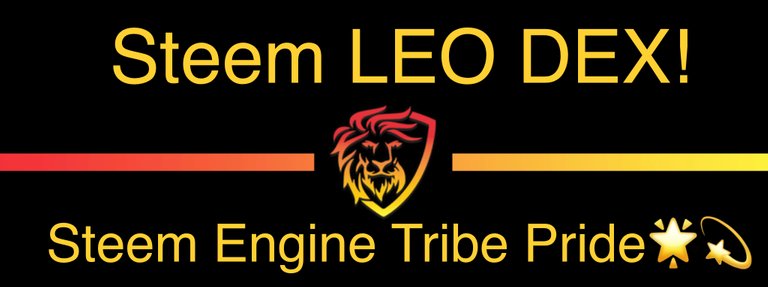Decentralized finance, an in-depth review
Decentralized finance, an in-depth review.
Definition:
Decentralized finance, known as DeFi, is a new and still evolving monetary system being built on public blockchains. This merging of finance and technology provides the potential for non-bankers to create Credit Facilities which facilitate cryptocurrency ecosystem with collateral backed loans of various sorts. The combination of recent developments in the development of non fungible tokens which were originally thought to allow the digitization of physical assets and the subsequent ability to cell 1/1 millionth of a hard asset backed by these coins to unlock equity is the beginning. The additional ability to digitize traditional securities allows the collateralization of credit facilities, which is the basis of a traditional banks function and allows both 1:1 lending and fractional deposit laws allowing fractional lending.
These are exciting times in “Fin-Tech” the place where finance and cryptocurrency smart contracts and decentralized finance interact. It’s no longer a time for traditional thinking about collateralization of credit facilities. It’s time to think outside the box. The visionaries in this field are either going to reap handsome rewards, either by competing with global bankers or by having their companies purchased by the global bankers.
Further information from these sources:
While the first word decentralization means that there isn’t a single point of failure, as identical records are kept across thousands of computers through a peer-to-peer network. It is also permissionless, it is also open to anyone — irrespective of their wealth or where they live. And, whereas a bank or a payment processing company can close the account of an unsavory customer, blockchains are censorship resistant.
At the heart of DeFi are decentralized applications, also called DApps. These plug-and-play tools make it easy for anyone with a smartphone to access financial services at lower costs.
source
You can think of a “dapp” as an application that is built on decentralized technology, rather than being built and controlled by a single, centralized entity or company.
source
What differentiates these DeFi dapps from their traditional bank or Wall Street counterparts?
At their core, the operations of these businesses are not managed by an institution and its employees — instead the rules are written in code (or smart contract, as mentioned above). Once the smart contract is deployed to the blockchain, DeFi dapps can run themselves with little to no human intervention (although in practice developers often do maintain the dapps with upgrades or bug fixes).
source
The code is transparent on the blockchain for anyone to audit. This builds a different kind of trust with users, because anyone has the opportunity to understand the contract’s functionality or find bugs. All transaction activity is also public for anyone to view. While this may raise privacy questions, transactions are pseudonymous by default, i.e. not tied directly to your real-life identity.
source
Dapps are designed to be global from day one — Whether you’re in Texas or Tanzania, you have access to the same DeFi services and networks. Of course, local regulations may apply but, technically speaking, most DeFi apps are available to anyone with an internet connection.
source
“Permissionless” to create, “permissionless” to participate — anyone can create DeFi apps, and anyone can use them. Unlike finance today, there are no gatekeepers or accounts with lengthy forms. Users interact directly with the smart contracts from their crypto wallets.
source
Flexible user experience — don’t like the interface to a certain dapp? No problem — you can use a third party interface, or build your own. Smart contracts are like an open API that anyone can build an app for.
source
Interoperable — new DeFi applications can be built or composed by combining other DeFi products like Lego pieces — e.g. stablecoins, decentralized exchanges, and prediction markets can be combined to form entirely new products.
source
Advocates say DeFi has the potential to transform the lives of the world’s unbanked — and make life more affordable for everyone else. Let’s take a look at the remittances market, in which foreign workers send billions of dollars across borders to their loved ones back home every year. The fees they face for doing this are often extortionate — eating into their modest income. DeFi services have the potential to slash these costs by more than 50%. Not only does this offer an incentive for an employee to earn more and be more productive, but it will also help support small businesses and economies on the other side of the world. Loans are another pain point that can be addressed thanks to DeFi. Right now, it can be near impossible for the unbanked to borrow money, often because they lack credit records and history with a banking institution. DeFi platforms connect borrowers and lenders directly, eliminate credit checks, and enable digital assets to be collateralized.
source
There are some challenges that lie ahead for DeFi’s proliferation. Even though it could transform the lives of millions of people, it’s an inescapable fact that DeFi solutions have failed to gain public awareness. Adoption in the crypto world has been modest to say the least — and according to a study published by the Cambridge Centre for Alternative Finance back in December 2018, there are just 25 million verified crypto users worldwide. When compared with the 1.7 billion unbanked people we were talking about before, it’s clear there’s a lot of work to be done.
It’s also worth remembering that even if DeFi applications manage to welcome hundreds of millions of people to its platforms, the public blockchains they rely on may lack the capacity to accommodate their demands. Visa claims it can process in excess of 24,000 transactions per second — dwarfing Bitcoin, which is capable of seven TPS, dramatically. Scalability concerns have also been a long-running thorn in the side of Ethereum, with its co-founder, Vitalik Buterin, recently admitting that the blockchain is almost full.
source
Examples of existing Decentralized Finance Dapps
Stablecoin and Decentralized Reserve Bank: MakerDAO
Maker is a stablecoin project where each stablecoin (called DAI) is pegged to the US Dollar and is backed by collateral in the form of crypto. Stablecoins offer the programmability of crypto without the downside of volatility that you see with “traditional” cryptocurrencies like Bitcoin or Ethereum.
You can try creating your own DAI stablecoin on the Maker Oasis dapp. Maker is more than just a stablecoin project, though–it aspires to be a decentralized reserve bank. People who hold a separate but related token, MKR, can vote on important decisions like the Stability Fee (similar to how the Federal Reserve’s Federal Open Market Committee votes on the Fed Funds rate).
Another stablecoin with a different architecture is USD Coin (USDC), where every USDC token is backed by one US dollar held in an audited bank account.
source
Borrow and Lend: Compound
Compound is a blockchain-based borrowing and lending dapp — you can lend your crypto out and earn interest on it. Or maybe you need some money to pay the rent or buy groceries, but your funds are tied up in your crypto investments? You can deposit your crypto to the Compound smart contract as collateral, and borrow against it. The Compound contract automatically matches borrowers and lenders, and adjusts interest rates dynamically based on supply and demand.
Other popular borrow/lend dapps are Dharma and dYdX. Aggregators like LoanScan track borrow/lend interest rates across the various dapps, so you can shop around for the best rates.
source
Automated Token Exchange: Uniswap
Uniswap is a cryptocurrency exchange run entirely on smart contracts, letting you trade popular tokens directly from your wallet. This is different from an exchange like Coinbase, which stores your crypto for you and holds your private keys for safekeeping. Uniswap uses an innovative mechanism known as Automated Market Making to automatically settle trades near the market price. In addition to trading, any user can become a liquidity provider, by supplying crypto to the Uniswap contract and earning a share of the exchange fees. This is called “pooling”.
Other popular Decentralized Exchange platforms (DEXes) include 0x, AirSwap, Bancor, Kyber, IDEX, Paradex and Radar Relay. All have slightly different architectures.
Another article on Medium Suggests there are over 100 plus Decentralized Finance Projects in operation.
link Clearly this is a very active area of development activity in the blockchain community.
Still yet another good article on decentralized finance: The Shift Toward Decentralized Finance: Why Are Financial Firms Turning To Crypto? By Iiker Koksal in Forbes Magazine. link
Excerpts:
The current global financial system has proved to be inefficient in multiple aspects. With so many financial intermediaries present in the system, the users face countless security risks. According to CIODIVE, cyber criminals target financial services 300 times more than other sectors. PWC analysts claim that 45% of financial intermediaries such as money transfers and stock exchanges suffer from serious cyber crimes every year. The growing number of cyber attacks leaves the public at risk of financial loss and data exploitation. The existing financial system deprives millions of people from basic financial services because of barriers such as location, wealth, and status. A decentralized financial system based on a public blockchain would provide access to financial services to everyone, regardless of their location and status.source
This article also nicely summarizes the important points about decentralized finance.
Excerpt:
Blockchain is permissionless, which means that anyone in the world can connect to it. This kind of accessibility on a global level would solve the issue of inequality posed by the current centralized financial system.
Blockchain is decentralized. This means that its records are kept scattered across thousands of devices. There is no centralized server or body of authority that controls the blockchain.
Lastly, blockchain is completely transparent, since all transaction records are publicly auditable. source
This article also gives a good example of a stable financial services company, which decided that the answer to many issues plaguing tradition financial systems like computer database hacks, theft of confidential customer information, limited ability to service customers in different parts of the world and an inability to tap into an estimated 1.7 billion people worldwide who are “unbanked” ....the answer was decentralized finance.
This company; Rainier AG an independent asset management firm based in Switzerland. Having been present in the traditional financial sector for over 30 years, the company has recognized the need for a shift toward new technologies.
With the primary mission to ensure security and transparency for token issuers and holders.
Rainier AG has introduced a set of offers including: an international STO exchange platform, a crypto trading platform and a European electronic financial service for operating crypto and fiat currencies through a single account. And they’re planning on collaborating with top companies to provide an ecosystem that will include innovative technological products aimed at the global financial market. source
It appears that this is an important developing niche in the cryptocurrency world that we all need to learn more about.
Stay thirsty for knowledge my friends.
✍️ written by Shortsegments

Read other articles by me on the Steemit Social Media Platform, where writers get paid for their content by the community by upvotes worth the cryptocurrency, called Steem.
Read my Steemleo investment Blog

Please follow my Twitter Feed Here

Shortsegments is a blogger or writer on the Steemit platform, a decentralized social media platform on a blockchain called Steem. In contrast to centralized platforms like Facebook, Instagram or YouTube the isn’t a central authority or owner to take your account away from you and your account can’t be deleted. You are the owner of your account. Find out more at this Link


Posted via Steemleo
This certainly contains a lot of good information about DeFi and it’s possibilities.
Thank you
Posted using Partiko iOS
!giphy good+book
Posted using Partiko iOS
giphy is supported by witness untersatz!
!giphy good+resource
Posted using Partiko iOS
giphy is supported by witness untersatz!
Hey @shortsegments, I found your post through the #defi tag.
I just created a group on that, now that we have communities :) since I'm also very interested in the subject.
Feel free to share your knowledge there in the future!
https://steemit.com/trending/hive-137804
Thank you. I would like to join that community. How do I do that?
Thank you. I would like
To join that community.
How do I do that?
- shortsegments
I'm a bot. I detect haiku.
Just click on the link https://steemit.com/trending/hive-137804 and then hit the subscribe button on the right.
If I post there does it show up on Steemit? Or just on the community site?
From my first tests it looks like it depends which app/interface you use. I'm on the Steemit website right now, where things are separated. Community posts do not appear on my blog. Which is good.
When I use the @Partiko app on my phone, though, all the community posts also appear on my blog. I guess all the Steem apps still need to catch up and adjust to the new community feature.
Hi Dear Friend @shortsegments.
The possibilities of DeFi are endless.
A recognized Spanish consortium implemented the liquidation of a tokenized bond in Ethereum Blockchain in the amount of $ 20 million in 2019, generating 99 K $ in interest during the first quarter. In the process, the number of intermediaries required was reduced, making the transaction faster, more efficient and simple, unequivocally demonstrating that the entire life cycle of a business, debt guarantee, can be managed in a blockchain.
With the ease of access that Dapps allow, DeFi becomes a liberating tool, since people can take advantage of their full potential, flexibility and the ability to accelerate procedures and reduce costs once third parties and intermediate figures cease to be part of the ecosystem.
Thank you for those valuable quotes.
All best, Piotr.
Dear @crypto.piotr
Thank you for the information about the Spanish Bond. It illustrates the scalability of these solutions and potential for rapid completion of transactions which multiplied the number of transactions you can complete. Imagine such transactions may take 4-6 weeks in traditional banking systems, which limits you to 13 or less transactions per year. Merely halving the time doubles the number of transactions and doubles your profits without the need to double your capitol or increase your risk.
In fact it could be argued that the “if then “ structure of smart contracts resulting in automatic machine traded liquidation of of margin calls it could be argued that these are safer then traditional loans.
DeFi is indeed a liberating tool for the masses if they learn about it, or it is marketed to them.
The future is bright for the bold and informed.
✍️
It's me again @shortsegments
I just realized that I never actually thanked you for your comment. Big thx.
ps.
I would need to ask you for little favour. Recently I've decided to join small contest called "Community of the week" and I desribed our project.hope hive/community. Would you mind helping me out and RESTEEM this post - just to get some extra exposure? Your valuable comment would be also appreciated.
Link to my post: on steemit or on steempeak
Thanks :)
Yours, Piotr